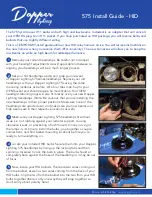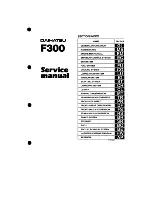
The maximum permissible speed for vehicle/
trailer combinations depends on the type of
trailer. Before beginning the journey, check
the trailer's documents to see what the max-
imum permitted speed is. Observe the legally
prescribed maximum speed in the relevant
country.
For certain Mercedes-Benz vehicles, the max-
imum permissible rear axle load is increased
when towing a trailer. See the "Technical
data" section to find out whether this applies
to your vehicle (
Y
page 484). If you utilise any
of the added maximum rear axle load when
towing a trailer, the vehicle/trailer combina-
tion may not exceed a maximum speed of
100 km/h for reasons concerning the oper-
ating permit. This also applies in countries in
which the permissible maximum speed for
vehicle/trailer combinations is above
100 km/h.
When towing a trailer, your vehicle's handling
characteristics will be different in comparison
to when driving without a trailer and it will
consume more fuel.
Change into a lower gear in good time on long
and steep downhill gradients.
i
This also applies if you have activated
cruise control, SPEEDTRONIC or
DISTRONIC PLUS.
This will use the braking effect of the engine,
so less braking will be required to maintain
vehicle speed. This relieves the load on the
brake system and prevents the brakes from
overheating and wearing too quickly. If you
need additional braking, depress the brake
pedal repeatedly rather than continuously.
Driving tips
If the trailer swings from side to side:
X
Do not accelerate.
X
Do not countersteer.
X
Brake if necessary.
R
Maintain a greater distance to the vehicle in
front than when driving without a trailer.
R
Avoid braking abruptly. If possible, brake
gently at first to allow the trailer to run on.
Then, increase the braking force rapidly.
R
The values given for gradient-climbing
capabilities from a standstill refer to sea
level. When driving in mountainous areas,
note that the power output of the engine,
and consequently the vehicle's gradient-
climbing capability, decrease with increas-
ing altitude.
Folding out the ball coupling
G
WARNING
If the ball coupling is not correctly engaged,
the trailer can detach. There is a risk of an
accident.
Always engage the ball coupling as described.
G
WARNING
If you release the ball coupling or it does not
engage correctly when folding in, it will swing
out. Within pivoting range of the ball coupling,
there is an increased risk of an accident and
injury.
Only release the ball coupling if the pivoting
range is unobstructed. Always make sure that
the ball coupling engages when folding in.
Saloon
Before you can tow a trailer with your vehicle,
you must fold out the ball coupling.
268
Towing a trailer
Driv
ing
and
parking
Summary of Contents for E-Class Estate
Page 2: ......
Page 3: ......
Page 5: ......
Page 33: ...30 ...
Page 123: ...120 ...
Page 179: ...176 ...
Page 277: ...274 ...
Page 343: ...340 ...
Page 344: ...Useful information 342 Stowage areas 342 Features 360 341 Stowing and features ...
Page 379: ...376 ...
Page 380: ...Useful information 378 Engine compartment 378 Service 384 Care 385 377 Maintenance and care ...
Page 417: ...414 ...
Page 494: ...491 ...
Page 495: ...492 ...
Page 496: ......
Page 497: ......
















































